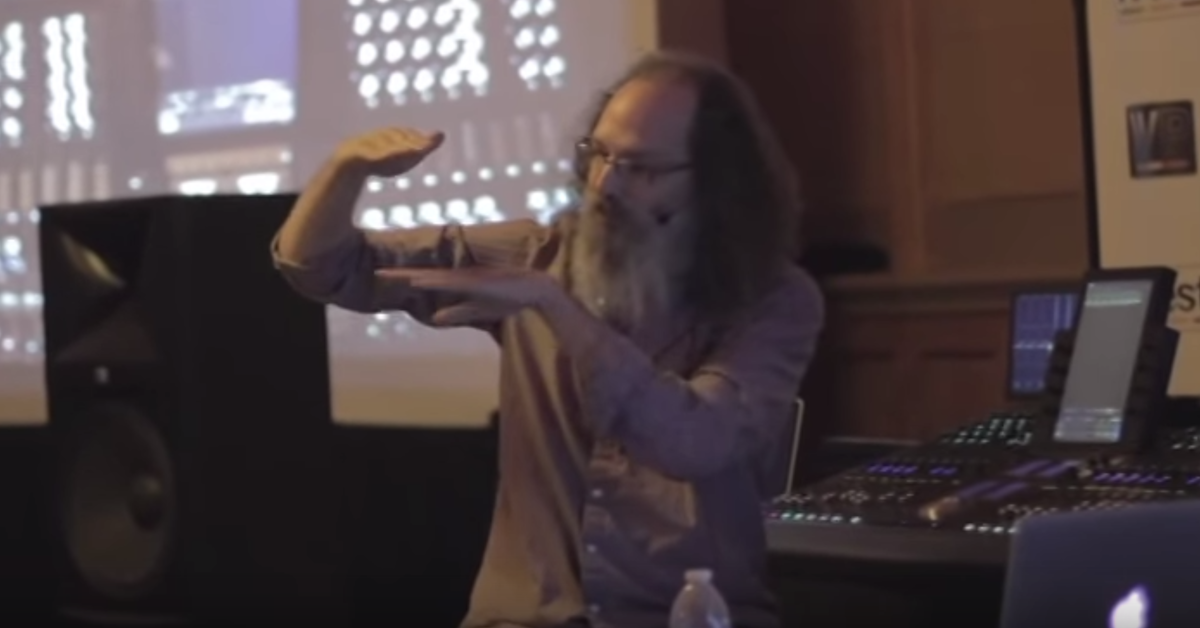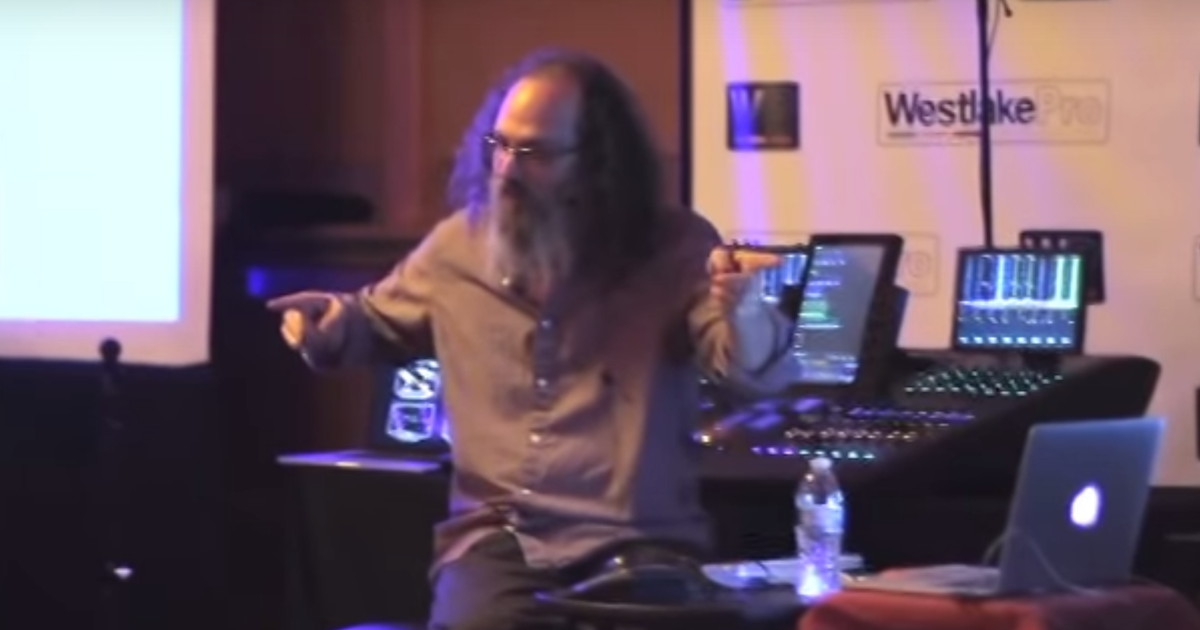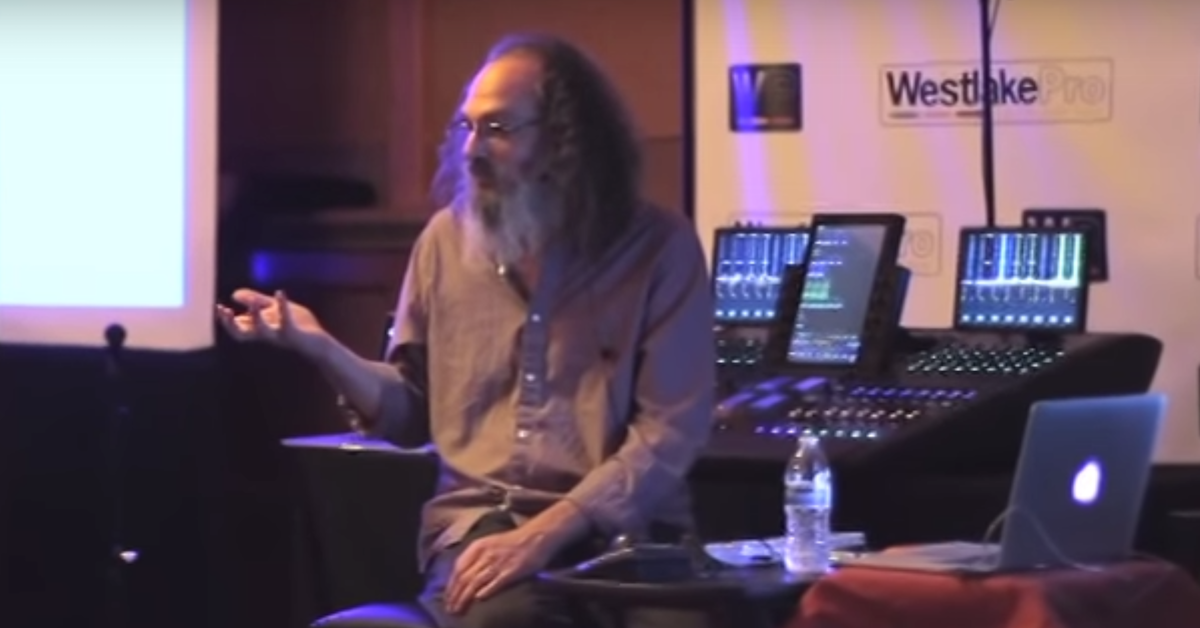Mixing Masterclass with Andrew Scheps — Part 2
Okay, so this one came to me very much like a multi-track session. There was no rough mix in the box, they were working I believe here quite a bit. Downstairs in Studio A. Then Ziggy’s got a studio with an API at his place where they cut all of the vocals and things like that.
So this one, the mix came completely from the template, so just really quickly, the way stuff is done here is I’ve got a stereo buss called “router,” and that, the router is the thing that my mix goes through on the way to the track I print on. I always print back into the session.
So it’s good, because all of my mixes are in the session in sync with the song, so when I open it up three weeks later, I can just flip the phase between the router and the mix, say, “Okay, everything is perfect,” and start working again.
The downside is, you’re then working at whatever sample rate the stuff comes in at.
I personally don’t care, because once again, I am lazy. I don’t want to have a second Pro Tools rig and be printing mixes at a higher sample rate, especially now that I’m mixing in the box. The processing is there, why would I want to go through converters and more converters just so that it’s more stuff? There’s absolutely no point to me.
So I always print back to a track, which I’ve hidden at the bottom, but basically this guy here, and I can’t — I’ll have to look at my little tiny screen while you look at the big screen — this is my master buss fader.
Now, on this song, most of the tracks are actually going directly to the router. They’re not going to auxes in between.
Now, everyone here is pretty conversant with Pro Tools, so I mean, I could take the time to talk about auxes and sends, but I don’t want to. Cool?
Okay, so most everything goes straight to the stereo buss. There are some exceptions, and then again, a lot of those exceptions come because I get lazy, so the percussion overall — I felt like I wanted to add a little top to it, and I use Aphex quite a bit, rather than EQ, because it gives you this crispy top that kind of floats up above things without having to wrench an EQ around.
If I want to add it to all of the percussion, but the percussion is going straight to the mix buss, then I have to setup a send on every percussion track, and I either have to do a group, and turn on the thing, and I’m really…
It’s much easier to just grab all of the percussion tracks, set their outputs to a new track stereo aux, my default is to have that aux go into my mix buss. Now all my horns are going through a stereo — I mean, all of my percussion is going through a stereo aux, done, and on that stereo aux, I have a send — Oh, it’s a send to an instrument crush. Okay, it’s a send to a parallel compressor, it’s not actually going to an Aphex, so I lied on this one.
But that was what it was. I wanted all of the percussion to hit this stereo compressor that’s being used parallel, which we’ll talk quite a bit about parallel stuff.
So that’s the fastest way to do it. Now, it also then gives me a little master along the way, but the way ideal with master faders for things is I use VCAs a ton. I’ve always used them, since they came into Pro Tools, because they’re really great, but since I’ve been in the box, they are kind of the main thing, because when I mix on the console, one of the first things I do is I try and get all however many faders it is to sort of collapse down to the center of the console using group faders, and then my lead vocals right there and whatever.
So I’ve got everything right in front of me. The way I do that in the box, even though they’re spread out all over the session is I do it with VCAs.
So you can see on this screen I’m set to just show VCAs. So I use this to — I just turned up the lead vocal while we were listening, because even though I’m not really in front of the speakers, I felt like it needed it a little, so I bumped it up, but what’s awesome on the S6, and you can do it just in Pro Tools as well, is the ability to so quickly get to parts of the mix.
So right now, on this tracks page, you can have selecting a track do all kinds of things, and the way Rich as showing it, it was selecting the track attention so it would show up in the center section, and you would see things explode, but you can also really quickly change the function to mute or solo, and now I can get to mute and solo with my VCAs, even though they’re all over the place in the session. They’re all just sitting on a screen.
So this is now my equivalent on the console, I used to have group faders in the middle, so now I’ve got a very small number of faders that are the entire mix. Right? The drum kit is a lot of tracks, and there’s actually a crash overdub here, because you’ll notice in the choruses…
[mix]
The guy is not an octopus, therefore, that’s an overdub, because it doesn’t go with the beat.
So — but all of that is this one VCA. As far as I’m concerned. Right?
Once my drums sound like I want them to sound, and we’ll talk about how I got them to sound how I wanted, which I’ll probably discover it again as we go, because it’s not like it’s the same every time, but once that’s done, drums are one fader wide. Bass is one fader wide. Guitars can be one fader wide. Maybe they’re two faders wide if you’ve got a solo, kind of leave that separate, but all of the rhythm stuff.
On this song, the guitars, I think there’s actually only one guitar left and then the keyboards, and we’ll see in a sec those are actually a really, really, really important part of the mix, and there’s a lot of really subtle stuff going on with those, because that’s the bubble. That’s that back beat, and mixing this entire record, that’s what Ziggy and I probably spent the most time on was balancing the back beat, because that is what drives the song.
This is the song when I got the rough mix that made me terrified about taking on this project, thinking, “I will now fail miserably as a New York Jew mixing a Reggae album. This is not going to go well.”
And you know, there was a lot of sort of more Pop stuff on the record, and things that were like, “Okay, fine, fine,” but this was the track that really scared the crap out of me, and I felt like getting the low end right on this song was a really big deal.
So immediately, Reggae, you think bass is going to be super loud, and the drums will be cool sounding, but they’re not going to have a whole lot of low end. That doesn’t work at all on this song, because he’s not down there the whole time. It’s not a simple bass line where between notes, there’s nothing, he’s up high, you need to hear it. So I couldn’t put a ton of sub on the bass.
So there’s actually a four-on-the-floor kick drum all of the way through, and that’s what’s really got the low end going, and it keeps it going really constantly, which then, you have this great interaction between the four-on-the-floor subby kick and the bubble up top.




